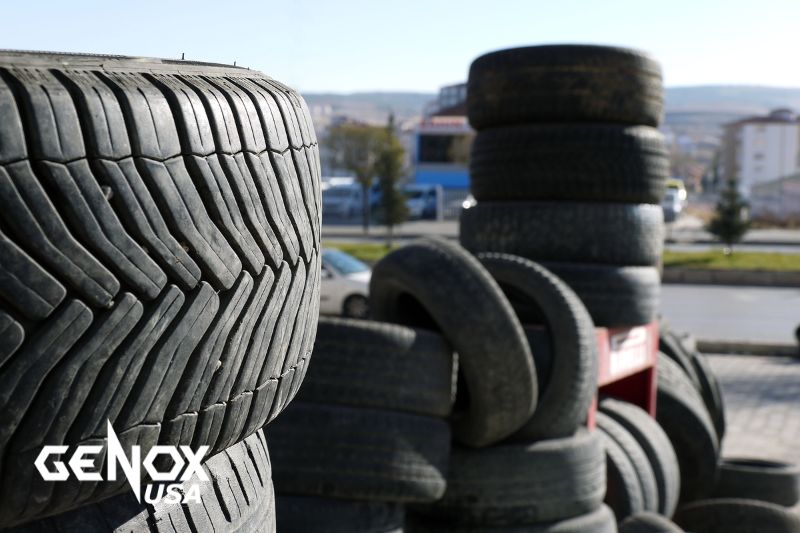A few tips for recycling tires.
Tires are one of the most common yet challenging types of waste due to their bulky nature and the materials they contain, which are not biodegradable. Properly recycling tires is crucial not only for environmental conservation but also for reducing landfill waste. This guide provides a comprehensive approach on how to get rid of old tires responsibly, with a spotlight on innovative solutions provided by Genox USA.
Why Recycle Tires?
Before diving into the recycling process, it’s important to understand why tire recycling is essential:
- Environmental Protection: Tires contain chemicals and oils that can be harmful to the environment. When improperly disposed of, these chemicals can leach into the ground, posing significant risks to soil and water quality.
- Resource Recovery: Tires are composed of valuable materials like rubber, steel, and fiber, which can be recovered and reused in various applications, reducing the need to produce new raw materials.
- Energy Conservation: Recycling tires often consumes less energy compared to producing new materials from scratch, contributing to overall energy savings.
Step-by-Step Process to Recycle Tires
Step 1: Collecting and Transporting Tires
The first step in the recycling process involves collecting and transporting old tires to a recycling facility. This can be done through:
- Local Drop-off Events: Many communities organize tire collection events where you can drop off your old tires for recycling.
- Retailer Take-back Programs: Tire retailers often offer take-back services where they collect old tires when you purchase new ones, ensuring that the old tires are sent to recycling facilities.
Step 2: Shredding and Processing
Once the tires arrive at the recycling facility, they go through a series of processes facilitated by advanced recycling systems like those from Genox USA:
- Shredding: Tires are first fed into a shredder, such as those provided by Genox USA, designed to handle the tough rubber and steel wires found in tires. This reduces the tires into smaller chunks, making them easier to process further.
- Granulation and Separation: After shredding, the tire pieces are further processed in a granulator, breaking them down into even smaller pieces. Using advanced separation technology, rubber is then separated from other materials like steel and textile fibers.
Step 3: Reusing Recycled Material
The materials recovered from old tires have various uses:
- Rubber Mulch: Recycled rubber can be used as mulch for landscaping and playground surfaces, providing a durable and weather-resistant covering.
- Asphalt Additive: Crumb rubber, which is rubber granulated to the size of sand grains, can be used as an additive in asphalt for road construction, enhancing the durability and longevity of road surfaces.
- Manufacturing Products: Recycled tire rubber can also be used in the manufacturing of new products such as rubber mats, anti-vibration pads, and even new tires.
Step 4: Responsible Disposal of Non-Recyclable Material
While most parts of a tire can be recycled, there are always residuals that cannot be processed further. Ensuring these materials are disposed of responsibly is crucial. Facilities often work with certified waste management services to handle and dispose of non-recyclable materials in compliance with environmental regulations.
Contact Genox USA to Learn More About Our Tire Recycling Systems
Recycling tires is a complex but vital process that protects the environment and conserves resources. By utilizing advanced tire recycling systems like those offered by Genox USA, it is possible to efficiently process and recycle old tires, transforming them into useful materials.
If you are looking for ways to get rid of old tires, consider reaching out to local recycling centers or participating in retailer take-back programs that employ advanced technology to ensure that your old tires are recycled properly and responsibly. Through these efforts, we can significantly reduce the environmental impact of used tires and contribute to a more sustainable future.
Contact Genox USA for more information about tire recycling systems

